1. Bekendstelling
A plug valve is a quarter‑turn rotary valve that regulates flow by rotating a cylindrical or conical plug inside the valve body.
When the plug’s through‑bore aligns with inlet and outlet ports, fluid passes freely; a 90° rotation closes the port.
Modern plug valves—refined through advances in metallurgy, bewerking, and sealing technology—are essential in oil & gas, chemies, waterbehandeling, and power‑generation industries.
2. What Is a Plug Valve?
N plug valve is a simple, robust quarter‑turn valve used to start, stop, or divert fluid flow in piping systems.
In sy kern, the valve consists of a hollow, cylindrical or tapered “plug” that sits within a matching cavity in the valve body.
When the plug’s internal passage (the bore) aligns with the pipeline ports, Vloeistof vloei vrylik; a 90° turn of the plug rotates the bore away from the ports, shutting off the flow.
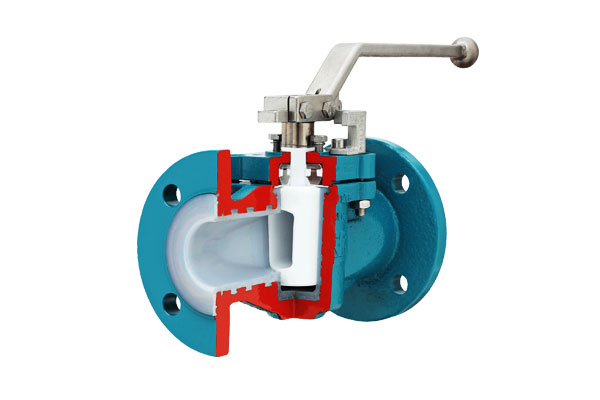
Sleutel Klepkomponente
- Liggaam: Houses the plug and provides inlet/outlet connections (flanged, threaded, or welded).
- Plug: The rotating element, shaped either as a straight cylinder or a cone, containing the port(s).
- Sitplekke: Provide sealing between plug and body; can be metal-to-metal surfaces or resilient inserts (Ptfe, rubber).
- Stam & Handle/Actuator: Transmits torque from the operator (lever, ratkas, pneumatic or electric actuator) to the plug.
Operating Principles
Rotary Flow Control
Plug valves operate by rotating the plug around its axis—requiring just a quarter turn for full open or full close.
This allows rapid actuation: typical manual operation takes less than one second, and automated pneumatic or electric actuators can complete the stroke in 0.5–2 seconds.
Seal Formation
- Metal‑to‑Metal Seals: The plug’s hardfaced surface (often coated with Stellite) directly contacts the body’s bore.
Under line pressure, the plug presses into the body, enhancing the seal.
These valves withstand temperatures up to 550 °C and high‑pressure applications (ANSI -klas 600 and above), but require higher break‑away torque (100–500 Nm for DN 50–200 valves). - Resilient (Sag) Sitplekke: Elastomeric or PTFE rings around the plug bore provide a conforming seal with minimal torque (10–50 Nm for DN 15–100 valves).
Soft‑seated plug valves achieve bubble‑tight shutoff per API 598 but are typically limited to temperatures below 200 °C and pressures under ANSI Class 300.
Torque Requirements & Actuation
Torque to operate a plug valve depends on size, seat type, and service conditions. As a rule of thumb:
- Soft‑seated DN 50 valves require ~15 Nm to open; soft‑seated DN 200 valves up to 60 Nm.
- Metal‑seated DN 50 valves may need 100 Nm; metal‑seated DN 200 valves up to 400 Nm.
Manual Actuation: Lever or handwheel, often with a gearbox for larger valves.
Pneumatic Actuation: Double‑acting or spring‑return cylinders for rapid, reliable quarter‑turn operation—cycle times <1 s.
Electric Actuation: Offers precise position control and feedback for integration with DCS/SCADA systems; typical stroke times of 2–5 s.
3. Types and Basic Designs of Plug Valve
Plug valve is engineered in various configurations to meet a wide range of process requirements.
Key design distinctions are based on lubrication method, plug geometry, port configuration, and internal flow path.
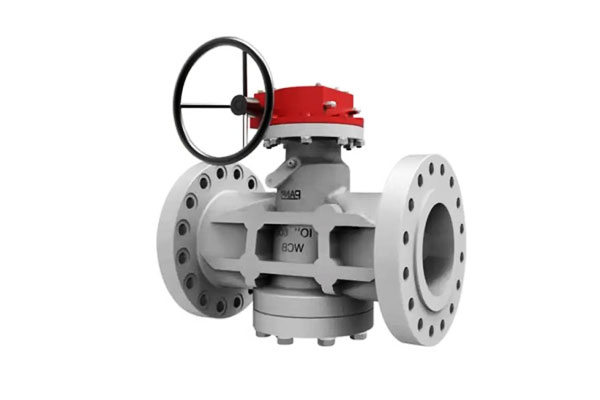
Lubricated vs. Non-Lubricated Plug Valves
- Lubricated Plug Valve
These valves rely on the injection of a sealant—typically a graphite- or PTFE-based compound—between the plug and the valve body.
The lubricant serves multiple roles: it reduces friction during operation, enhances sealing integrity, and provides a protective barrier against corrosive or abrasive media. - Non-Lubricated Plug Valve
These designs use self-lubricating materials—such as PTFE (Polytetrafluoroethylene) with glass fiber reinforcement—for the seat or employ hard-coated plugs (Bv., electroless nickel or hard chrome coatings with surface hardness > 60 HRC) to minimize friction.
Plug Configurations: Cylindrical, Conical & Trunnion-Mounted
- Conical (Tapered) Plug
Featuring a taper that matches the valve body’s seat angle, conical plugs are self-aligning under line pressure, providing a more secure and leak-tight seal.
They are especially effective in high-pressure applications (≥2,500 psi / 172 verbod). - Cylindrical Plug
These plugs have parallel sides and rely on spring-loaded seats or resilient inserts to maintain contact.
Cylindrical configurations are better suited for low to moderate pressure systems and are often used in compact or low-cost valve designs. - Trunnion-Mounted Plug
In this design, the plug is guided by upper and lower trunnions, which reduce torque requirements and wear on sealing surfaces.
This structure is preferred for large-diameter valves (≥12″) or extremely high-pressure applications (op na 15,000 psi / 1,034 verbod), such as subsea or high-integrity pressure protection systems (HIPPS).
Multi-Port Plug Valve
- Three-Way Plug Valve
Designed with L-shaped or T-shaped plug passages to divert flow between three ports.
Common in mixing, bypassing, or diverting services (Bv., blending hot and cold water streams, sampling systems, or line switching). - Four-Way Plug Valve
Include cross-shaped or double-L internal passages to reroute flow between two inlet-outlet pairs.
These are widely used in batch chemical operations and reactor feed alternation, allowing complex process sequences with minimal valve count.
Port Size Configurations: Full-Port vs. Reduced-Port
- Full-Port Plug Valve
The internal flow passage matches the diameter of the connecting pipeline (Bv., a 2-inch valve has a 2-inch port).
This design minimizes pressure drop and is essential where flow efficiency or pigging is critical.
Typical Cv for 2″ full-port plug valve: ~50. - Reduced-Port Plug Valve
The flow path is one nominal pipe size smaller than the inlet/outlet connections (Bv., a 2-inch valve with a 1.5-inch bore).
This design reduces material and manufacturing costs but introduces a higher pressure drop.
Typical Cv for 2″ reduced-port valve: ~30.
4. Materials and Construction of Plug Valve
The material selection and construction of a plug valve are critical to its performance, duursaamheid, and chemical compatibility in demanding industrial environments.
Each component—the body, plug, sitplekke, and internal seals—is engineered using materials tailored to withstand specific pressures, temperature, and process media.

Liggaam & Plug Materials
| Materiaal | Standard/Grade | Sleuteleienskappe | Tipiese toepassings |
| Gietyster | ASTM A126 Class B | Economical, suitable for low-pressure systems; limited corrosion resistance | Water supply, HVAC, municipal systems |
| Koolstofstaal | ASTM A216 WCB | Hoë meganiese sterkte; suitable for medium-high pressure/temperature | Olie & gas, stoom, Petrochemiese pypleidings |
| Vlekvrye staal | ASTM A351 CF8/CF8M (316SS) | Uitstekende korrosieweerstand, especially against chlorides and acids | Chemical plants, food/pharma, marine environments |
| Nikkellegerings | Hastelloy C-276, Inklok 625, Monel 400 | Superior resistance to aggressive chemicals and high temperatures | Acid handling, buiteland, gas scrubbing |
| Smeebare yster / Brons | ASTM A536 / ASTM B62 | Good mechanical properties with cost-effectiveness | Landbou, drinkbare water, general plumbing |
Sitplek & Liner Materials
| Materiaal | Temp Range | Belangrike kenmerke | Recommended Services |
| Ptfe (Teflon) | –50°C to +230°C | Lae wrywing, excellent chemical inertness | Voedsel, farmasie, corrosive chemical handling |
| Filled PTFE | –50°C to +260°C | Reinforced with glass or carbon for better wear and strength | High-cycle chemical systems |
| Elastomers (EPDM, FKM) | –30°C to +200°C | Good sealing flexibility, resistant to water, lug, and light hydrocarbons | Waterbehandeling, HVAC |
| Flexible Graphite | –200°C to +540°C | High-temp resistance, fire-safe; used in critical sealing | Steam lines, raffinadery, high-temp pipelines |
| Metal-to-Metal (Stelliet, Chrome-Plated) | Up to 650°C | Hard sealing surface for erosive or abrasive fluids | Slurries, abrasive oils, fertilizer plants |
Smeermiddels (for Lubricated Plug Valves)
| Lubricant Type | Sleutelkenmerke | Service Suitability |
| Graphite-Based Grease | High-temperature resistance, lae wrywing | Steam, heavy oil, refinery applications |
| Ptfe / MoS₂ Compounds | Low coefficient of friction, chemically inert | Corrosive gas, chemical feedlines |
| Silicone-Based Sealants | Neutral behavior, effective in a wide temperature range | Natural gas distribution, general service |
5. Performance Characteristics of Plug Valve
Plug valves are known for their simple operation, robust sealing, and bidirectional flow capabilities.
Nietemin, their performance varies significantly based on design, Materiële seleksie, and service conditions.
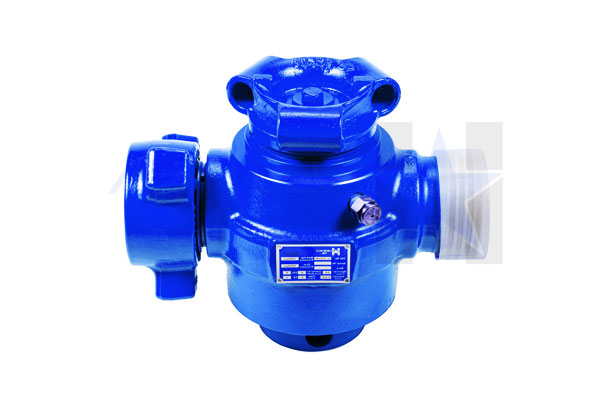
Pressure-Temperature Ratings
Plug valves are rated according to industry standards such as Api 599 en ISO 17292, which define safe operating pressure limits at various temperatures.
These ratings depend heavily on the valve’s body material en seat design.
| Materiaal | ASME -klas | Maksimum druk (psig) | Max Temp (° C) |
| Koolstofstaal (WCB) | 150 | ~285 @ 38°C | ~425°C |
| Vlekvrye staal (CF8M) | 300 | ~740 @ 38°C | ~540°C |
| Allooi (Inklok 625) | 600 | >1,480 @ 38°C | >650° C |
Seal Tightness & Leakage Classes
Plug valves, especially with soft seats or injected grease, can achieve Bubble-Tight Shutoff. Leakage standards are tested per:
- Api 598: Pressure test protocol for industrial valves
- ISO 5208: Valve leakage classification
- Leakage Class VI (sagte sitplek): Essentially zero visible leakage
- Leakage Class IV (metaalstoel): Acceptable for most industrial gas and liquid services
Lubricated plug valves rely on grease to maintain seal integrity and require periodic re-injection, wyle non-lubricated versions use elastomer or PTFE sleeves that can wear over time.
Vloei -eienskappe (Cv Values)
Plug valves exhibit linear or equal-percent flow control behavior, depending on port geometry (round vs. rectangular or V-notch).
Though primarily used for isolation, some plug designs allow moderate throttling.
- Full-Port Plug Valve (2-duim):
-
- Cv ≈ 45–55 (high flow efficiency)
- Reduced-Port Plug Valve (2-duim):
-
- Cv ≈ 25–35 (higher pressure drop)
CV (Flow Coefficient) represents the flow rate in gallons/minute of water at 60°F that will flow through the valve with a 1 psi pressure drop.
Torque Requirements & Actuation
Plug valves typically require higher operating torque than ball or butterfly valves due to larger contact areas between the plug and seat.
| Kleptipe | Typical Torque (Nm for 2″ Valve) |
| Lubricated Plug Valve | ~50–100 Nm (depends on lubricant film) |
| PTFE-Lined Plug Valve | ~30–60 Nm |
| Metal-Seated Plug | >100 Nm (requires gear or actuator) |
6. Application Fields of Plug Valves
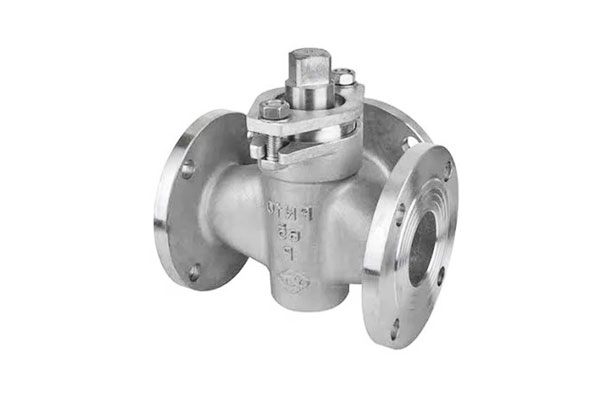
- Olie & Gas (Upstream, Midstream, Downstream)
- Chemies & Petrochemiese Nywerheid
- Water & Wastewater Treatment
- Kragopwekking
- Pulp & Papierbedryf
- Mining & Mineral Processing
- HVAC & Building Services
- Voedsel & Beverage Industry
- Sag & Offshore Engineering
- Farmaseutiese & Biotech Industry
- LNG & Cryogenic Systems
- Staal & Metallurgical Plants
- Verfyn & Bulk Storage Terminals
- Textile & Dyeing Industry
- Brandbeskermingstelsels
7. Advantages and Limitations of Plug Valve
Advantages of Plug Valve
- Simple Design: Minimal internal components, making maintenance straightforward.
- Quick Operation: 90-degree quarter-turn allows fast open/close action.
- Tight Shutoff: Excellent sealing capability, especially with resilient seats or lubricant.
- Tweerigting -verseëling: Seals effectively in both flow directions.
- Compact Size: Short face-to-face dimensions compared to gate or globe valves.
- Multi-Port Options: Available in 3-way or 4-way configurations for flow diversion or mixing.
- High Durability: Suitable for abrasive, korrosief, or slurry media (with appropriate materials).
- In-Line Maintenance: Many designs allow servicing without removing the valve from the pipeline.
Limitations of Plug Valve
- High Operating Torque: Especially in metal-seated or larger valves; may require gear or actuator.
- Friction Wear: Metal-to-metal designs can experience galling and wear over time.
- Lubrication Needs: Lubricated plug valve require periodic re-greasing to maintain sealing and ease of operation.
- Koste bereken: Can be more expensive than ball valves in similar pressure/temperature ranges.
- Limited Throttling: Not ideal for precise flow control due to potential erosion and wear in partially open positions.
- Size Constraints: Less common in sizes above 24 inches due to torque and manufacturing limits.
8. Vergelyking: Plug Valve vs. Ball, Hek, and Butterfly Valves
| Aspek | Prop klep | Balklep | Hekklep | Skoenlapperklep |
| Ontwerp | Simple body and tapered/cylindrical plug | Rotating spherical ball with bore | Rising wedge or parallel gate disc | Disc rotates on a central shaft |
| Operation | 90° Kwartaaldraai | 90° Kwartaaldraai | Multi-turn (slow) | 90° Kwartaaldraai |
| Sealing Capability | Uitmuntend (especially lubricated types) | Baie goed (stywe afskakeling) | Goed (metal-to-metal contact) | Matig tot goed (depends on seat design) |
| Throttling | Beperk, not recommended | Beperk (not ideal for throttling) | Acceptable for minimal control | Fair to good control depending on design |
| Torque Requirements | Hoog, especially for larger valves | Gematig | Low to high (depending on pressure/size) | Laag tot matig |
| Onderhoud | Gematig (lubrication required for some types) | Laag (minimal maintenance) | Hoog (Sitplekdrag, stam verpakking) | Laag tot matig |
| Suitability for Slurry/Abrasive Media | Goed (especially with metal seats) | Arm (may clog or erode ball seat) | Jaarbeurs | Fair to good with suitable disc materials |
| Multi-Port Options | Ja (3-way, 4-way) | Ja (limited 3-way availability) | Nee | Nee |
| Pressure Drop | Laag tot matig (depends on port size) | Laag (full bore design) | Laag | Gematig |
| Space Requirement | Compact face-to-face, larger actuator for torque | Compact | Long face-to-face (vertical space needed) | Very compact |
| Koste bereken | Matig tot hoog (especially metal-seated) | Gematig | Laag tot matig | Laag tot matig |
| Aansoeke | Chemies, olie & gas, missel, multi-directional flows | General use, water, olie & gas, shutoff | Waterworks, isolation, non-frequent operation | HVAC, water, low-pressure gas, large pipe diameters |
Opsomming:
- Use Plug Valves when you need tight shutoff, bidirectional sealing, or multi-port flow in tough services like slurries or chemicals.
- Kogelkleppe are ideal for fast shutoff and minimal pressure drop in clean media applications.
- Gate Valves suit infrequent isolation in large-bore systems.
- Skoenlapperkleppe excel in space-limited, low-pressure environments with large diameters.
9. Sizing, Selection & Installation Guidelines
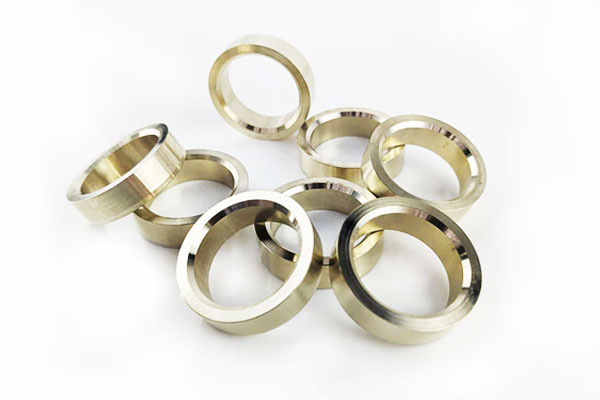
- Media and Conditions: Match body and seat materials to fluid chemistry, temperatuur, and pressure.
- Sizing: Use Cv calculations to ensure required flow at expected ΔP; select actuators to deliver 1.5× break‑away torque.
- Installasie: Orient plug vertically in lubricated valves to prevent grease pooling; maintain 1× valve length of straight pipe on each side for optimal performance.
10. Onderhoud, Inspection & Troubleshooting
- Smeer: Every 6–12 months or 5,000 siklusse; use manufacturer‑approved grease.
- Seat Replacement: In many designs, seats can be changed in-line without body removal.
- Common Issues: Galling on metal seats remedied by relubrication; graphite packing leaks corrected by repacking; plug erosion addressed by Stellite overlays or seat refurbishment.
11. Standaarde, Certifications & Toets
- Api 599: Inspection and test procedures.
- ISO 17292: Performance requirements for plug, bal, and butterfly valves.
- MSS SP‑79/SP‑80: Guidelines for lubricated and non‑lubricated plug valves.
- Certifications: API Monogram, CE marking, SIL ratings for safety instrumented systems.
12. Konklusie
Plug valves offer a unique blend of eenvoud, spoed, en veelsydigheid across a diverse array of process industries.
By carefully selecting body, plug, and seat materials—and by adhering to best practices in sizing, installasie, and maintenance—engineers can leverage plug valves for reliable isolation, diversion, and rudimentary flow control in virtually any fluid service.
Hierdie: Hoë-presisie-klepgietoplossings vir veeleisende toepassings
Hierdie is 'n gespesialiseerde verskaffer van presisie -klepgietdienste, Die lewering van hoëprestasie-komponente vir nywerhede wat betroubaarheid verg, Drukintegriteit, en dimensionele akkuraatheid.
Van rou gietstukke tot volledig gemasjineerde klepliggame en samestellings, Hierdie Bied eind-tot-einde-oplossings wat ontwerp is om aan streng globale standaarde te voldoen.

Ons kundigheid in die giet van die klep sluit in:
Beleggingsgooi vir klepliggame & Afwerking
Gebruik verlore wasgiet-tegnologie om komplekse interne meetkunde en klepkomponente met 'n stywerheid te produseer met uitsonderlike oppervlakafwerkings.
Sand gietstuk & Shell Mold Casting
Ideaal vir medium tot groot klepliggame, flense, en enjinkap-wat 'n koste-effektiewe oplossing vir robuuste industriële toepassings bied, insluitend olie & gas- en kragopwekking.
Presisiebewerking vir kleppassing & Seëlintegriteit
CNC -bewerking van sitplekke, drade, en verseëling gesigte verseker dat elke rolverdeling aan dimensionele en verseëling vereistes voldoen.
Materiële reeks vir kritieke toepassings
Van vlekvrye staal (CF8/CF8M/CF3/CF3M), brons, smeebare yster, aan dupleks en hoë legeringsmateriaal, Hierdie voorrade klepgietstukke wat gebou is om in korrosief te presteer, hoë druk, of hoë temperatuuromgewings.
Of jy pasgemaakte beheerkleppe benodig, Plugkleppe, Globe kleppe, hekkleppe, of hoë volume produksie van industriële klepgietstukke, DEZE is your trusted partner vir akkuraatheid, duursaamheid, en kwaliteitsversekering.
Vrae
When should I choose a plug valve over a ball valve?
Kies vir Plugkleppe in high‑temperature or abrasive services, or where simple quarter-turn, bidirectional operation is needed.
How often should a lubricated plug valve be re-lubricated?
Typically every 6–12 months or after 5,000–10,000 cycles, depending on service severity.
Can plug valves be used for throttling service?
Limited throttling is possible with equal‑percent plugs, but seat wear increases; globe valves excel at precise flow control.
What causes plug valve leakage and how is it fixed?
Wear or damage to seats and plugs leads to leakage; remedy via seat replacement, plug re-lapping, or re-lubrication for metal‑to‑metal valves.



